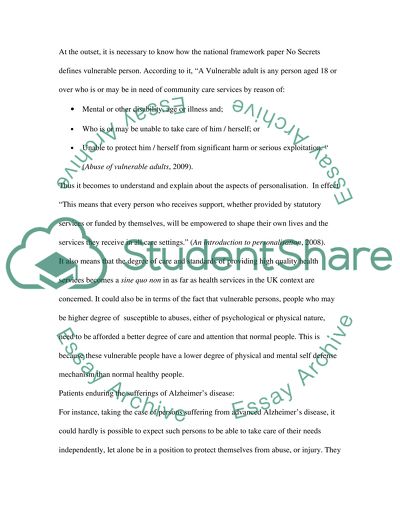Cite this document
(“How might the recent consultation on No Secrets impact on social work Essay”, n.d.)
How might the recent consultation on No Secrets impact on social work Essay. Retrieved from https://studentshare.org/miscellaneous/1559613-how-might-the-recent-consultation-on-no-secrets-impact-on-social-work-practice-in-safeguarding-adults-draw-on-your-knowledge-of-the-personalisation-agenda-to-inform-your-discussion
How might the recent consultation on No Secrets impact on social work Essay. Retrieved from https://studentshare.org/miscellaneous/1559613-how-might-the-recent-consultation-on-no-secrets-impact-on-social-work-practice-in-safeguarding-adults-draw-on-your-knowledge-of-the-personalisation-agenda-to-inform-your-discussion
(How Might the Recent Consultation on No Secrets Impact on Social Work Essay)
How Might the Recent Consultation on No Secrets Impact on Social Work Essay. https://studentshare.org/miscellaneous/1559613-how-might-the-recent-consultation-on-no-secrets-impact-on-social-work-practice-in-safeguarding-adults-draw-on-your-knowledge-of-the-personalisation-agenda-to-inform-your-discussion.
How Might the Recent Consultation on No Secrets Impact on Social Work Essay. https://studentshare.org/miscellaneous/1559613-how-might-the-recent-consultation-on-no-secrets-impact-on-social-work-practice-in-safeguarding-adults-draw-on-your-knowledge-of-the-personalisation-agenda-to-inform-your-discussion.
“How Might the Recent Consultation on No Secrets Impact on Social Work Essay”, n.d. https://studentshare.org/miscellaneous/1559613-how-might-the-recent-consultation-on-no-secrets-impact-on-social-work-practice-in-safeguarding-adults-draw-on-your-knowledge-of-the-personalisation-agenda-to-inform-your-discussion.


